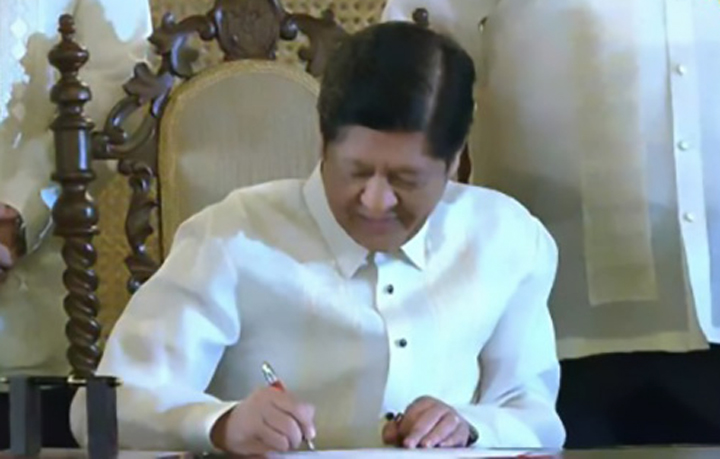INITIATIVES that will enhance the capability of the country’s students and labor force will get the lion’s share of the P6.352-trillion proposed national expenditures plan (NEP) for 2025, which President Ferdinand R. Marcos Jr. approved on Tuesday.
The approved amount is 10.1 percent higher than the P5.768-trillion budget for 2024 under the FY 2024 General Appropriations Act (GAA), according to the Department of Budget and Management (DBM).
The agencies which will get the bulk of the 2025 budget appropriations are those engaged in education, particularly the Department of Education (DepEd), State Universities and Colleges (SUCs), Commission on Higher Education (CHED) and the Technical Education and Skills Development Authority (Tesda).
These agencies will be tasked to improve access to Early Childhood Education as well as Technical and Vocational Education and Training and higher education programs; upskill and reskill the labor force; implement the Philippine Qualifications Framework and Philippine Skills Framework; strengthen existing employment facilitation services; and enhance income support and emergency employment programs.
Other agencies that will get significant portions of the 2025 NEP are the Department of Public Works and Highways (DPWH), Department of Health (DOH), Department of the Interior and Local Government (DILG), and Department of National Defense (DND).
In terms of expense class, most of the budget next year will be used for maintenance and other operating expenses followed by personnel services, capital outlays, and financial expenses.
Marcos approved the 2025 NEP after it was presented by DBM Secretary Amenah Pangandaman in a meeting in Malacañang.
The NEP focused on funding the priority initiatives of the Marcos administration, namely, food security, social protection, healthcare, housing, disaster resilience, infrastructure, digital connectivity, and energization.
“Since I’ve seen it before on the macro level, I think the priorities in terms of our proposed appropriations, upon addressing it, weighted our priorities properly in terms of appropriations,” Marcos said.
The 2025 NEP will be submitted to Congress for its consideration in crafting the 2025 General Appropriations Act (GAA). The 19th Congress will open its third and last session on July 22, when the President delivers his State of the Nation address (Sona).
The Marcos administration crafted the budget based on fiscal space, implementation and readiness of Program/Activity/Projects (PAPs), agency’s absorptive capacity, alignment with Budget Priorities Framework and Philippine Development Plan 2023-2028.
Also considered for the budget proposal are the Public Investment Program (PIP), Three-Year Infrastructure Program (TRIP), Information Systems Strategic Plan (ISSP), and Program Convergence.
DBM presentation
In her presentation to the President, Budget Secretary Pangandaman noted the 2025 budget will increase allocations to the health and education sectors and local government units (LGUs).
Pangandaman said the education sector will receive the largest percentage of the national budget as mandated by the Constitution.
To enhance the operations of the Department of Health (DOH) hospitals in Metro Manila, DOH regional hospitals and other health facilities, the budget allocated to the health sector will be increased.
LGUs will be allotted P1.034 trillion as a share of the National Tax Allotment (NTA), higher by 18.73 percent than the P871.38 billion NTA share this year.
The DBM added the annual block grant of the Bangsamoro Autonomous Region in Muslim Mindanao (BARMM) will also be higher next year.
Pangandaman said last week the higher budget is also due to the increased allowance for the staff in the upcoming national and local elections, expansion of the Pantawid Pamilyang Pilipino Program (4Ps) including the First 1,000 Days and the recently signed law increasing the teaching allowance of public school teachers from P5,000 to P10,000.
With the increased budget, Pangandaman said the availability of fiscal space and the implementation-readiness of programs, activities, and projects were considered.
The budget proposal also took note of the agencies’ absorptive capacity, alignment with Budget Priorities Framework and Philippine Development Plan 2023-2028, Public Investment Program/Three-Year Infrastructure Program, Information Systems Strategic Plan, and Program Convergence.
“We have crafted this carefully and meticulously to ensure that we stay on track with our economic growth targets while ensuring no one is left behind,” the Budget chief said.
The proposed budget is consistent with the three pillars of the Philippine Development Plan (PDP) 2023 to 2028, Pangandaman underscored.
Pillar 1 is to develop and protect the capabilities of individuals and families, while Pillar 2 is to transform production sectors to generate more quality jobs and competitive products. The last, Pillar 3, is to create an enabling environment.
“The proposed 2025 national budget reflects our unwavering commitment to promoting the sound, efficient, and effective management and utilization of government resources toward the achievement of our national socioeconomic development goals,” Pangandaman said.
The budget is equivalent to 22 percent of the country’s gross domestic product (GDP), as determined by the Cabinet-level Development Budget Coordination Committee (DBCC) meeting on June 27.
Pangandaman, as DBCC chair, aims to continue the growth trajectory of the economy to attain the Marcos Jr. administration’s economic targets and achieve upper middle-income status and single-digit poverty levels by 2028.
Marcos Jr. is expected to present the proposed budget to Congress within 30 days of his Sona delivery, while Pangandaman targets to submit to Congress the proposed budget within one week from the President’s Sona.
Image credits: Screenshot from RTVM
